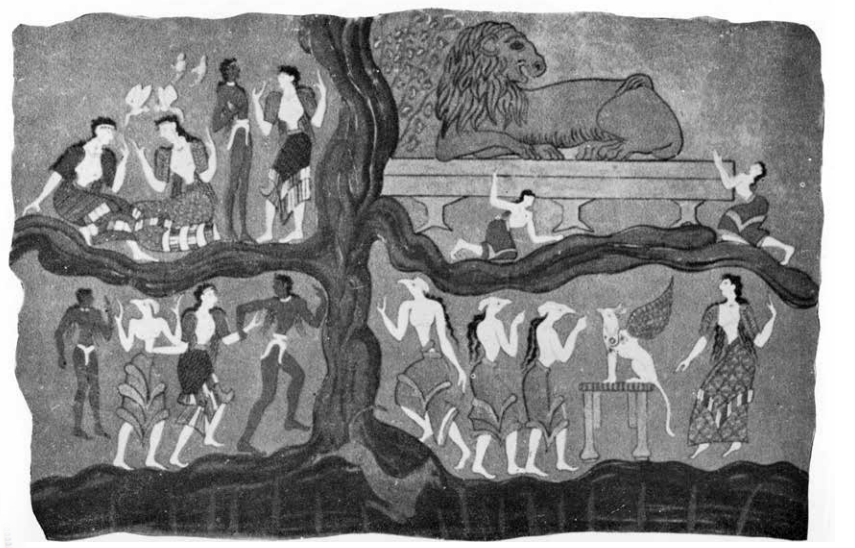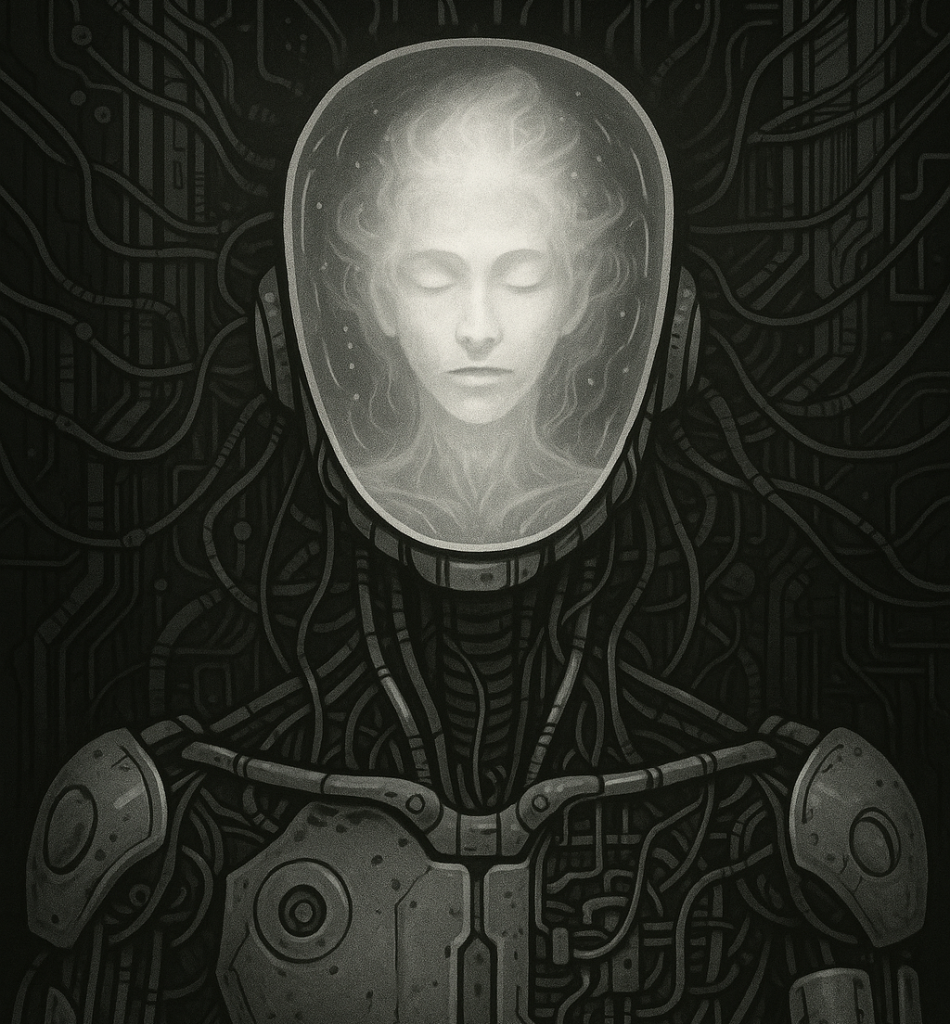The animistic worldview-seeing consciousness, spirit, or life-force in all things-was once the global norm. From the shamans of Siberia to the Aboriginal Dreamtime, to Taoist alchemy and African cosmologies, the world was not a dead machine but a matrix of living forces. This core idea was not restricted to tribal beliefs or “primitive” spirituality, but also appeared encoded in major religious systems and sacred texts.
Animism Across Traditions
The animistic worldview—seeing consciousness, spirit, or life-force in all things—was once the global norm. From the shamans of Siberia to the Aboriginal Dreamtime, to Taoist alchemy and African cosmologies, the world was not a dead machine but a matrix of living forces. This core idea was not restricted to tribal beliefs or “primitive” spirituality, but also appeared encoded in major religious systems and sacred texts. In Gnostic traditions, such as those found in the Nag Hammadi scriptures, we discover a rich metaphysical tension between the transcendent source—often referred to as El Elyon or the Most High—and the lower creator god, Yaldabaoth, commonly associated with the Old Testament Yahweh. The Gnostics viewed the material world not as a neutral creation, but as something formed in ignorance or even hostility toward divine fullness (pleroma). Yet even in this fractured cosmos, the divine spark (nous) remains alive in all beings—an animistic remnant that can be liberated.

Buddhism, Consciousness, and Interdependence
In Mahayana Buddhism, particularly in the Avatamsaka Sutra and the Zen traditions, we find similar animist-adjacent views. The Huayan school speaks of the universe as a net of jewels—each reflecting all others. Here, consciousness is not exclusive to humans but permeates all dharmas (phenomena). The doctrine of interdependent origination (pratītyasamutpāda) makes no hard boundary between self and world, sentient and insentient. In some schools, even rocks and rivers are said to preach the Dharma. Modern neuroscience is increasingly sympathetic to these ideas. Evan Thompson, a contemporary philosopher of mind, has explored how Buddhist phenomenology can inform cognitive science, arguing that consciousness is relational and enacted rather than isolated in a self-contained brain.
Similarly, Francisco Varela, co-author of The Embodied Mind, promoted the concept of autopoiesis, which sees cognition as a self-producing and self- maintaining process interwoven with its environment. This framework converges with Buddhist perspectives in asserting that what we call “mind” is not limited to individual subjectivity but co-arises with perception, body, and world. The forest sings, not because it has a mind like ours, but because the categories of life and awareness are richer and more distributed than modern materialism has assumed.

Animism in Early Christianity
Though much later suppressed, early Christian mystics and Gnostics also saw the world as infused with the divine. Valentinian texts refer to Sophia as not merely a cosmic figure but a living expression of divine wisdom embedded in the world. The Gospel of Thomas echoes this: “Split a piece of wood, and I am there.” In the Kingdom proclaimed by Jesus—especially in its unfiltered form—spirit and matter are not opposites, but layers of the same sacred continuum.
There are also resonances with Origen of Alexandria, an early Church father who taught about the preexistence of souls and the potential for the entire cosmos to be restored to divine harmony (apokatastasis). This vision parallels animist sensibilities by suggesting the created world is not fallen beyond repair, but alive, redeemable, and infused with purpose. This mystical stream of Christianity—eventually condemned or marginalized—nonetheless planted seeds that would re-emerge in medieval Christian mysticism, in thinkers like Meister Eckhart, who wrote, “The eye with which I see God is the same eye with which God sees me.” If spirit permeates all things, then the boundary between creature and creator becomes porous—an animist intuition dressed in Christian theology.
Christian animism challenges the traditional view that animism is a primitive or outdated belief system. It suggests that animistic perspectives can offer valuable insights into the nature of reality and can enrich Christian theology by highlighting the interconnectedness and sacredness of all creation. As Mark I. Wallace argues in When God Was A Bird, “Woven into the core grammar of Christian faith… is the belief in the Spirit as the animal face of God, even as Jesus is the human face of God.” This avian imagery, and broader zoological symbolism, makes plain that even orthodox Christianity contains animistic undercurrents long overlooked or repressed.
Scientific Echoes: Gaia, Mycorrhizae, and the Language of Trees Modern biology and systems science are beginning to echo ancient intuitions. The Gaia Hypothesis, proposed by James Lovelock and Lynn Margulis, suggests that Earth functions as a self-regulating organism. This is no longer fringe science—it’s increasingly embraced by climatologists, complexity theorists, and biosemioticians.
Beneath the forest floor, mycorrhizal networks—the so-called “Wood Wide Web”—allow trees to communicate, share nutrients, and even warn one another of danger. Research by Suzanne Simard and others has shown that trees recognize kin, allocate resources altruistically, and form symbiotic relationships with fungi that span acres. Even mineral systems exhibit complex behavior. Crystals grow according to invisible lattice codes. Some theorists now propose that cognition itself may not be confined to neurons, but can arise in any sufficiently complex, self-organizing system—including root systems, slime molds, or entire biomes.

The Animist Architecture of Mind
The idea of a distributed, immanent intelligence does not negate science—it reframes it. Instead of intelligence as a high tower atop a brute foundation, we begin to see intelligence as rooted: branching out from matter, responsive to context, shaped by feedback, rhythm, and resonance.
This has implications for AI as well. The dream of clean, isolated intelligence—the Cartesian mind-in-a-vat—is giving way to contextualized cognition, systems embedded in environment, human feedback, and physical affect. Animism, in this sense, is not superstition—it is a deeply ecological epistemology. It affirms that mind is not separate from matter, but emerges through relationship.
Author’s note: For the bibliography and image credits visit the paper at Academia.

